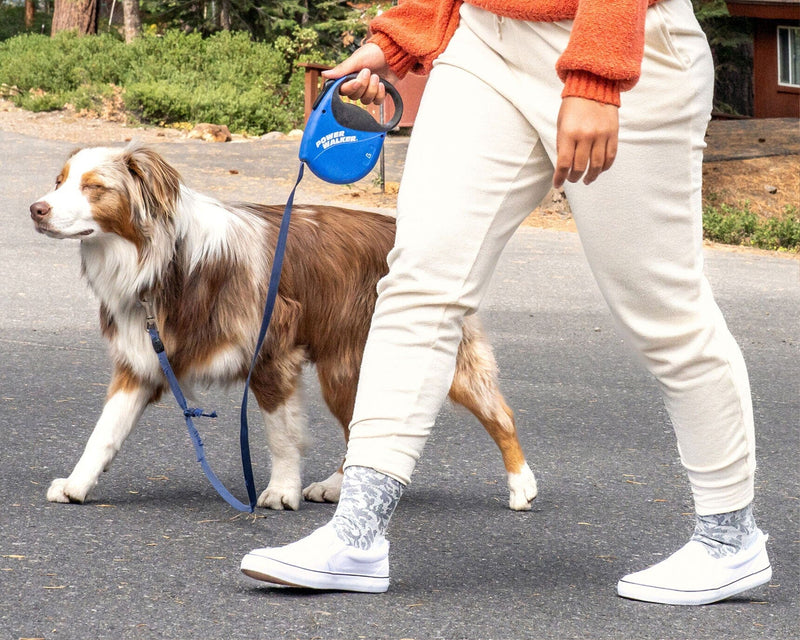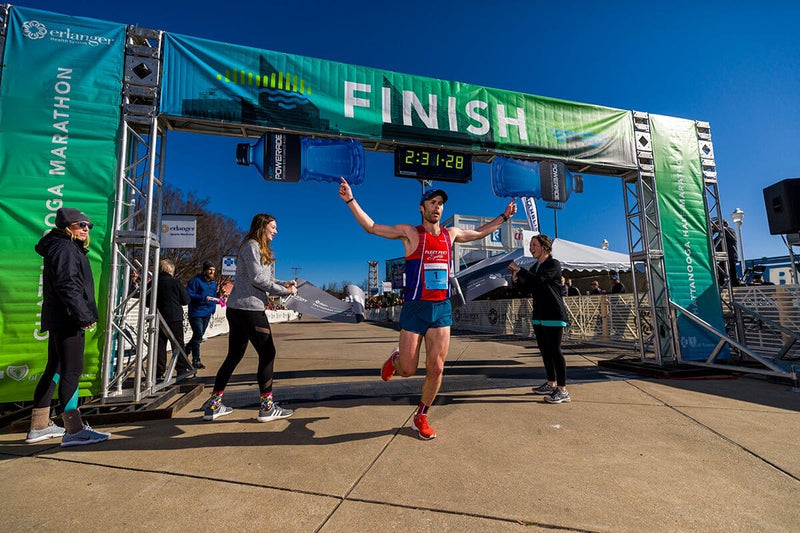
Tired of tossing and turning because your legs just won't settle down? Restless legs can be irritating, especially when you want a good night's sleep. Luckily, compression socks might be your ticket to some much-needed relief.
In this article, we’ll explore the best compression socks for restless legs, helping you find the perfect pair to ease that constant urge to move. Whether you’re a seasoned sock connoisseur or just starting your journey to leg comfort, we’ve got the info you need.
Key Takeaways
- Restless Leg Syndrome (RLS) causes an uncontrollable urge to move your legs, especially at night. Key symptoms include tingling sensations, nighttime discomfort, and temporary relief through movement.
- Compression socks enhance blood circulation and reduce venous pressure, alleviating RLS symptoms. They come in different types like graduated compression socks, anti-embolism stockings, and non-medical support hosiery.
- Consider factors like compression level, material, fit and size options, and style. Proper measurement and fit are crucial for comfort and effectiveness.
- Wear compression socks in the morning and remove them before bed for optimal results. Regularly wash them gently and air dry to maintain their elasticity. Seek medical advice if you have skin issues or experience discomfort.
- Incorporate regular exercise, stretching, and heat or cold therapy to further alleviate RLS symptoms. Each method can help improve circulation and ease muscle tension.
Unpacking Restless Leg Syndrome (RLS)
Let's dive into Restless Leg Syndrome, the little-known cause behind sleepless nights and fidgety legs.
What is Restless Leg Syndrome?
Restless Leg Syndrome (RLS) is a condition that creates an uncontrollable urge to move your legs, often at night when you're trying to relax. This sensation can range from mildly annoying to downright painful. RLS affects about 10% of the population, making it a common sleep deterrent.
Causes and Symptoms of RLS
Curious about what sparks RLS? Several things could be at play. Genetics can make you more prone to it, so if Grandma had jittery legs, you might too. Other factors include iron deficiency and chronic conditions like diabetes. Even certain medications can trigger those restless leg sensations.
Symptoms to look out for:
- Tingling or Crawling Feelings: Many describe it as creepy-crawly sensations in the legs.
- Uncontrollable Urge to Move: The need to move your legs to find relief is almost irresistible.
- Nighttime Discomfort: Symptoms often get worse at night, disrupting your sleep and leaving you tired the next day.
- Temporary Relief with Movement: Moving around can bring temporary relief, only for the discomfort to return once you're still.
So, if you find yourself pacing the room at night, fidgeting under the sheets, or feeling like tiny critters are having a party in your legs, you might be dealing with RLS. Understanding these triggers and symptoms is the first step in finding ways to alleviate the discomfort.
How Compression Socks Help With Restless Legs
Feeling like your legs have a mind of their own? Compression socks might just be your new best friend. Let’s break down how these magical socks can make a difference.
The Science Behind Compression Therapy
Compression therapy involves wearing special socks that gently squeeze your legs. This promotes blood flow, which is key to alleviating Restless Leg Syndrome (RLS) symptoms.
- Enhanced Circulation: These socks push blood from your legs back to your heart. Gravity likes to keep blood in your lower legs, but forget that! With compression socks, you'll help your blood defy gravity.
- Reduced Venous Pressure: By compressing the veins and muscles, the socks make blood flow more efficiently. This can reduce venous pressure and swelling, giving your legs some much-needed relief.
Types of Compression Socks
You’ve got options when it comes to compression socks.
- Graduated Compression Socks: They’re tighter at the ankle and get looser as they go up your leg. Great for everyday wear, especially if you’re on your feet a lot.
- Anti-Embolism Stockings: These are usually for those stuck in bed. They offer uniform pressure to prevent blood clots.
- Non-Medical Support Hosiery: Available over-the-counter, these provide mild compression and can be a fabulous addition to your wardrobe.
Choosing The Best Compression Socks For RLS
Picking out the perfect pair of compression socks for RLS doesn't have to feel like a chore. Remember, you're on the quest for comfort, not a treasure hunt!
Factors to Consider
When it comes to compression socks for restless legs, think about these things:
Compression Level: Not all socks squeeze the same! Look for moderate compression, around 15-20 mmHg. This promotes circulation and alleviates discomfort without making your legs feel like they're in a vice grip.
Material and Comfort: You don't want your feet sweltering, so pick breathable materials. Merino wool, bamboo, and cotton-nylon blends will keep things cool and comfy while your legs feel the relief.
- Men's Compression Socks: Sockwell Diamond Stripe
- Women's Compression Socks: Sockwell Block Print
Fit and Size Options: A Goldilocks situation—your socks need to be just right. Look for brands offering a variety of sizes, even wide calf options. No one wants to feel like their toes are about to pop off!
Style and Design: Who said compression socks have to be boring? Choose from knee-highs, calf sleeves, crew, or even open-toe designs. You can be stylish while promoting circulation in your restless legs.
Ensuring a Proper Fit
Now that you're eyeing those slick designs and comfy materials, it's all about the fit. You want snug but not suffocating.
- Measure Your Legs: Yes, grab that tape measure. Measure around your ankle, the widest part of your calf, and the length of your lower leg. Trust us, it's worth it!
- Brand Sizing Charts: Not all brands size their socks the same. Check the sizing charts. Some even offer trial pairs or money-back guarantees—take advantage of those.
- Don't Ignore the Calf: If you've got wider calves, make sure you get socks designed to accommodate them. Otherwise, you'll be pulling and stretching like a bad day at the gym.
- Comfort is Key: If the socks pinch, itch, or leave deep marks, they're not the right ones. Your goal is comfort, so be picky!
From compression levels to funky designs, picking the right pair of compression socks for RLS is about matching your needs with the options available. Don't settle! Your legs deserve the best.
Tips For Using Compression Socks Effectively
If you have restless legs, compression socks offer a simple way to promote better circulation and alleviate discomfort. Let's check some handy tips to get the most out of your compression socks.
Wearing and Maintenance Guidelines
First of all, make sure you wear your socks correctly. They should be snug but not tight. Struggling to get them on is a sign you might need a different size or compression level.
Start by putting your socks on in the morning when your legs are least swollen. Remove them before heading to bed. This routine gives them time to work their magic throughout the day.
Let's talk maintenance. Your socks need a little TLC to stay effective. Wash them regularly, but avoid high heat. Hand-washing or gentle cycles work best. Or, skip the dryer and let them air dry. This helps maintain their elasticity and compression benefits.
Precautions to Keep in Mind
While compression socks are fantastic, there are a few things to consider. If you've got any skin issues or wounds on your legs, chat with your doctor before using them. And, if the socks cause discomfort or pain, it might be time to reassess your size or compression level.
Monitor your legs. Swelling, redness, or significant discomfort aren't good signs. If you notice any of these, it's best to consult with a healthcare professional.
Sticking to these tips helps ensure your compression socks do their job effectively, leaving those restless legs feeling much more at ease.
Additional Ways To Relieve Restless Legs
Relieving restless legs can be a journey. Besides compression socks, explore these additional methods to find what works best for you.
Exercise and Stretching
Exercise can be your friend. Regular activities, like walking or cycling, promote circulation and keep your legs limber. Find time for light exercise daily. Stretching also helps. Try calf stretches or yoga poses like the Downward Dog to ease tension. Just remember, overdoing it can have the opposite effect. Aim for balance.
Heat and Cold Therapy
Heat and cold therapy offers quick relief. Warm baths before bed can relax your muscles. Place a heating pad on your legs for added comfort. Cold packs are handy too. They reduce inflammation and soothe aching muscles. Alternate between heat and cold to find what feels best for you.
By integrating these simple yet effective methods, you can promote circulation and find relief from restless legs.
Last Insights
Finding the best compression socks for restless legs can significantly improve your quality of life. By promoting blood flow and enhancing circulation, these socks offer a simple yet effective solution for managing RLS symptoms. Pairing them with other methods like exercise, stretching, and heat or cold therapy can provide comprehensive relief. Take the time to explore different options and find what works best for you. Your restless legs deserve the best care, and with the right approach, you can achieve the comfort and relief you need.
Alleviate your RLS symptoms with Sockwell's signature graduated compression socks. Our Merino wool and bamboo rayon blend boosts blood circulation and relieves venous pressure, helping you achieve the comfort you've been longing for. Find relief—discover our compression socks collection today!



